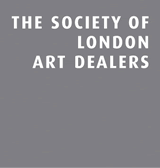A.R. Penck (1939 - 2017)
- AVAILABLE ARTWORKS FOR SALE
For more available works please contact us on stern@pissarro.com or +44 (0)20 7629 6662.
A.R. Penck was born Ralf Winkler at Dresden in Germany and studied there with a group of other Neo-Expressionist painters. He became one of the foremost exponents of the new figuration alongside Jörg Immendorff, Georg Baselitz and Markus Lüpertz. Under the East German Communist regime, they were watched by the secret police and were considered dissidents. In the late 1970s they were included in shows in West Berlin and were seen as exponents of free speech in the East with their work being shown by major museums and galleries in the West throughout the 1980s. They were included in a number of important shows including the famous Zeitgeist exhibition in the well-known Martin Gropius Bau Museum and the important New Art show at the London’s Tate Gallery in 1983.
In the 1980s Penck became known worldwide for paintings with pictographic, neo-primitivist imagery of human figures and other totemic forms and was included in many important shows both in London and New York.
Penck's sculptures, though less familiar, evoke the same primitive themes as his paintings and drawings. They use common everyday materials such as wood, bottles, cardboard boxes, tin cans, masking tape, tinfoil, and wire, and are crudely painted and assembled. Despite their anti-art aesthetic and the rough-and-ready quality of their construction, they have the same symbolic, archetypal anthropomorphic forms as his flat symbolic paintings. The paintings are influenced by Paul Klee's work and mix the flatness of Egyptian or Mayan writing with the crudity of the late black paintings by Jackson Pollock. The sculptures are often reminiscent of the stone heads of Easter Island and other Oceanic art.
A.R. Penck lived and worked in Berlin, Düsseldorf, Dublin and New York.
Read more
In the 1980s Penck became known worldwide for paintings with pictographic, neo-primitivist imagery of human figures and other totemic forms and was included in many important shows both in London and New York.
Penck's sculptures, though less familiar, evoke the same primitive themes as his paintings and drawings. They use common everyday materials such as wood, bottles, cardboard boxes, tin cans, masking tape, tinfoil, and wire, and are crudely painted and assembled. Despite their anti-art aesthetic and the rough-and-ready quality of their construction, they have the same symbolic, archetypal anthropomorphic forms as his flat symbolic paintings. The paintings are influenced by Paul Klee's work and mix the flatness of Egyptian or Mayan writing with the crudity of the late black paintings by Jackson Pollock. The sculptures are often reminiscent of the stone heads of Easter Island and other Oceanic art.
A.R. Penck lived and worked in Berlin, Düsseldorf, Dublin and New York.

